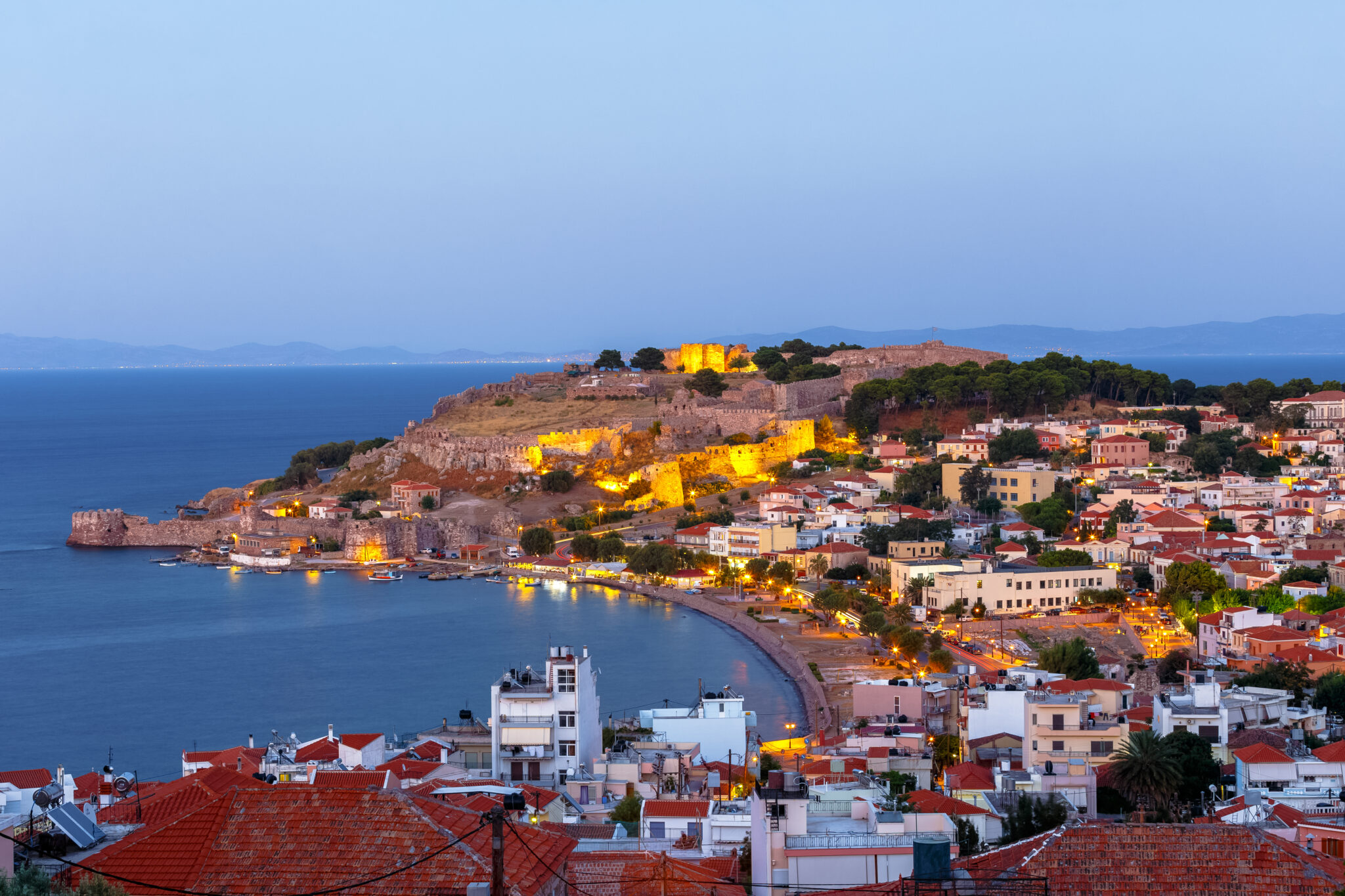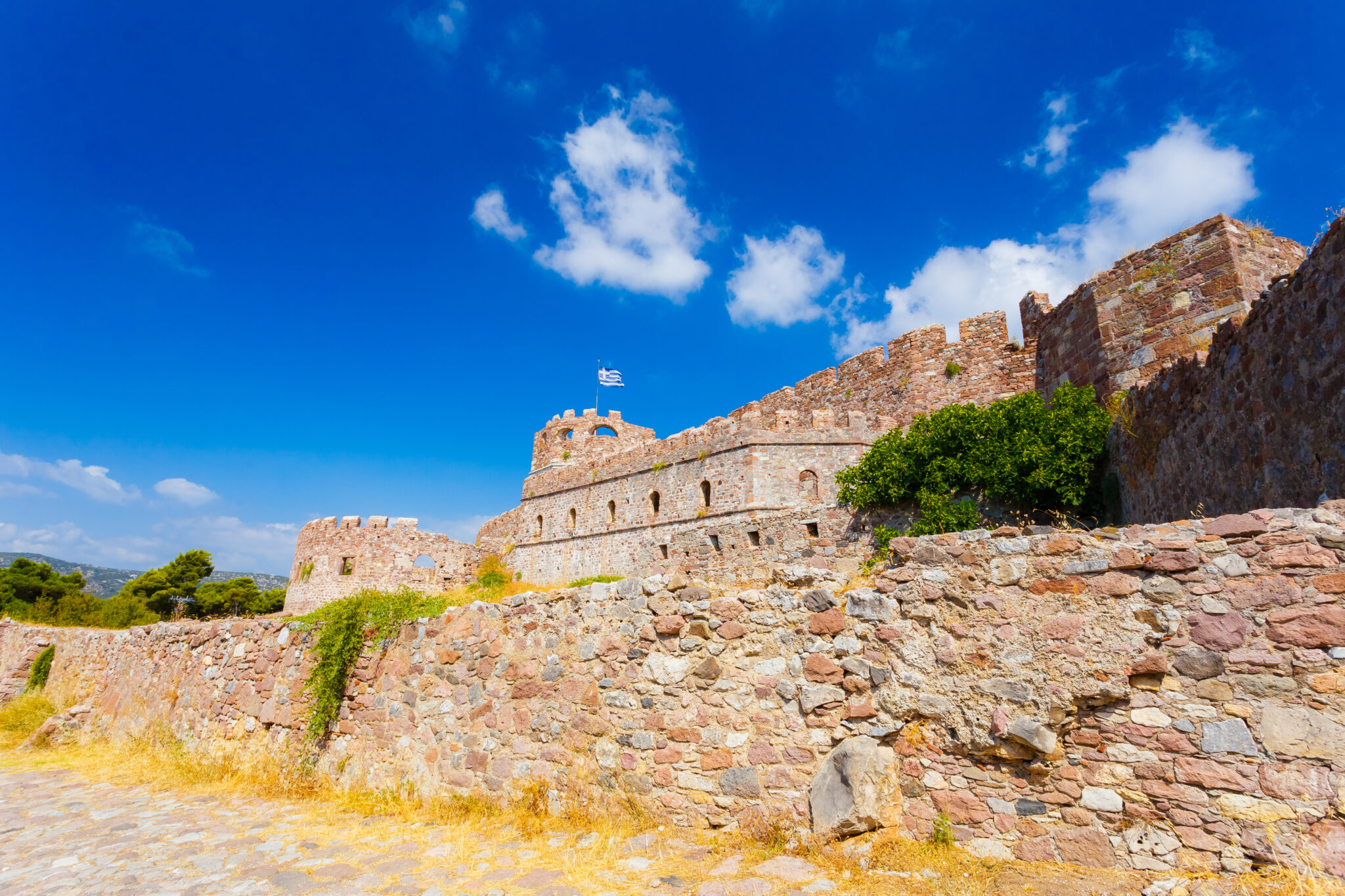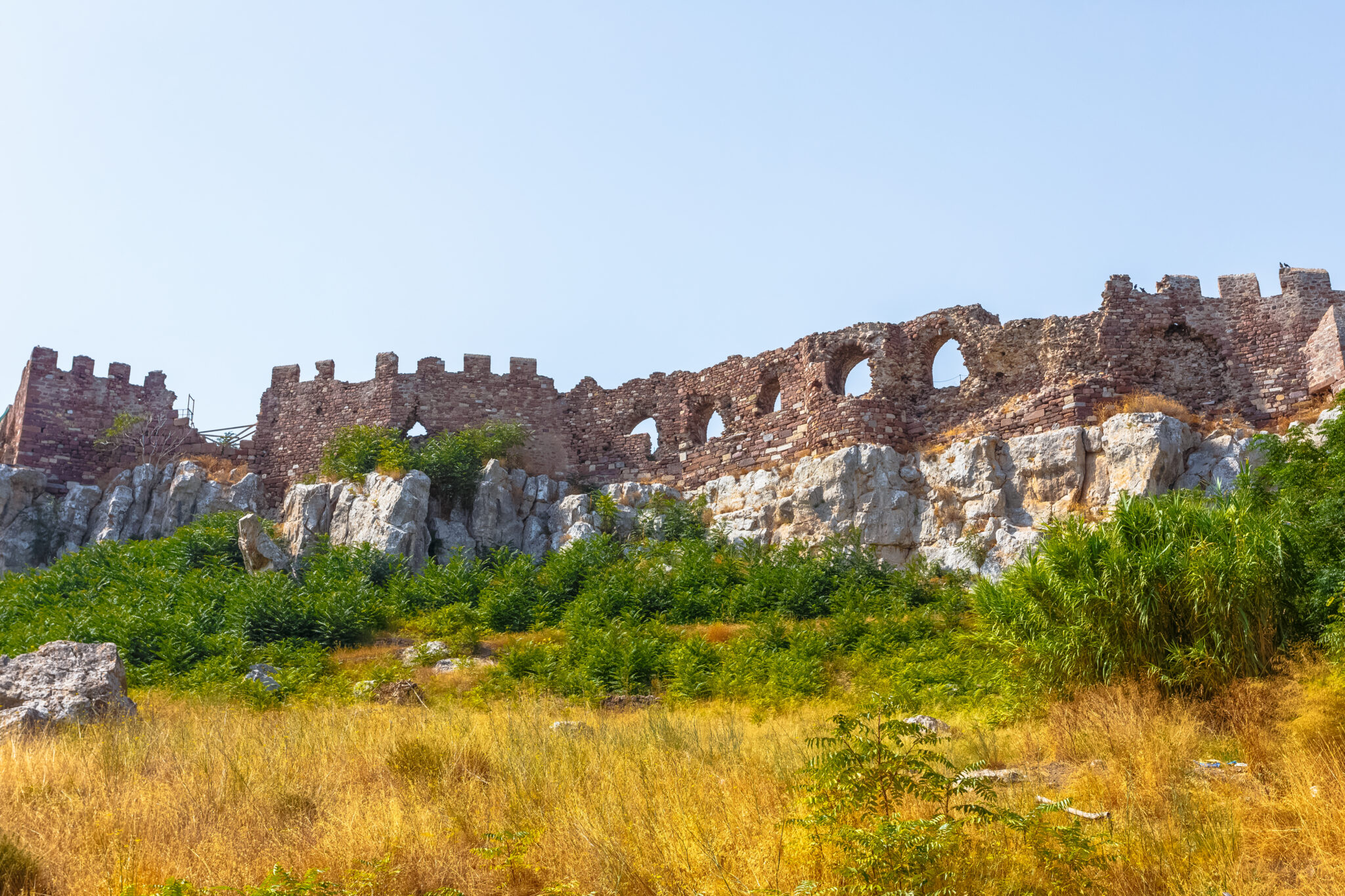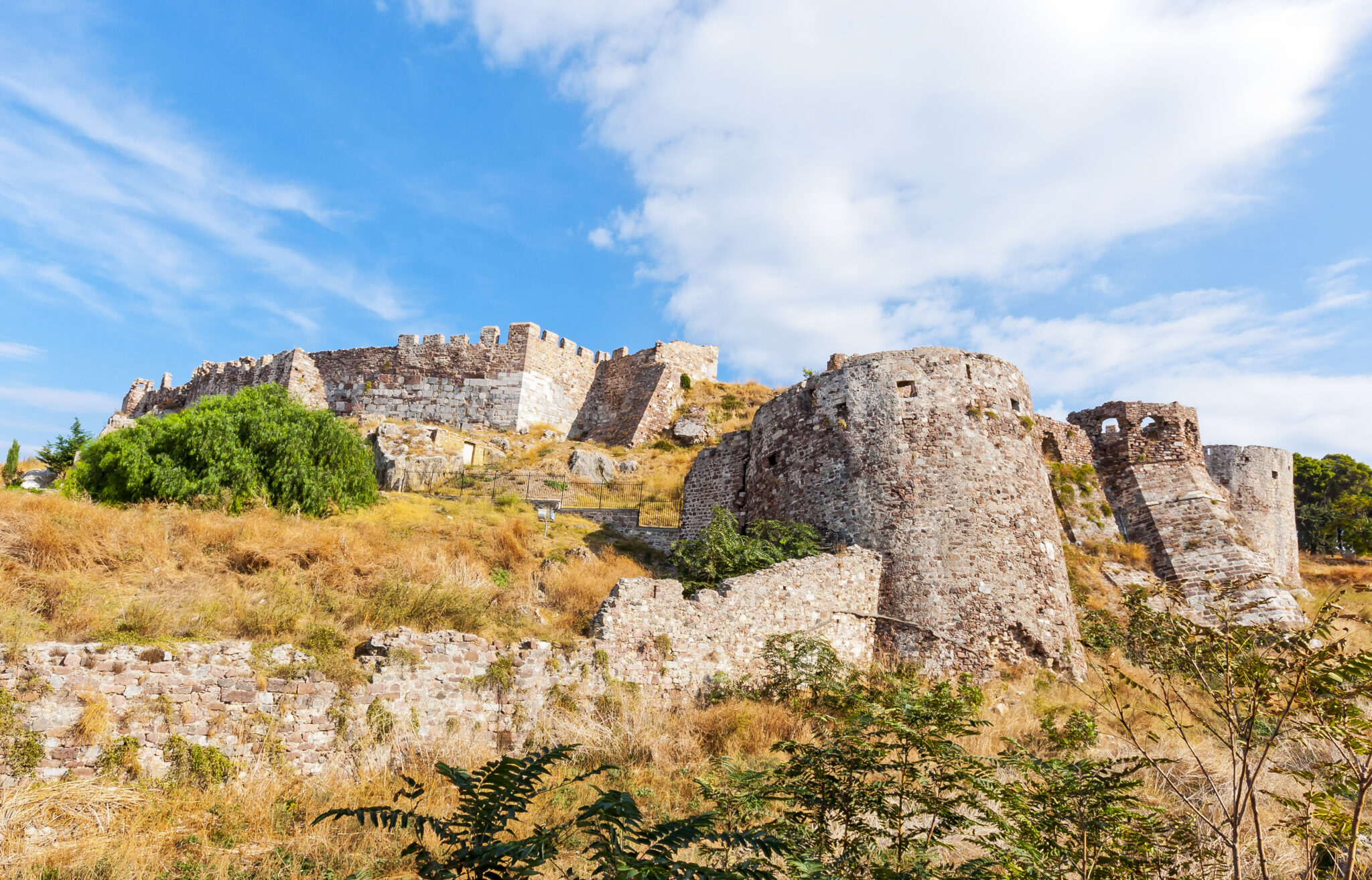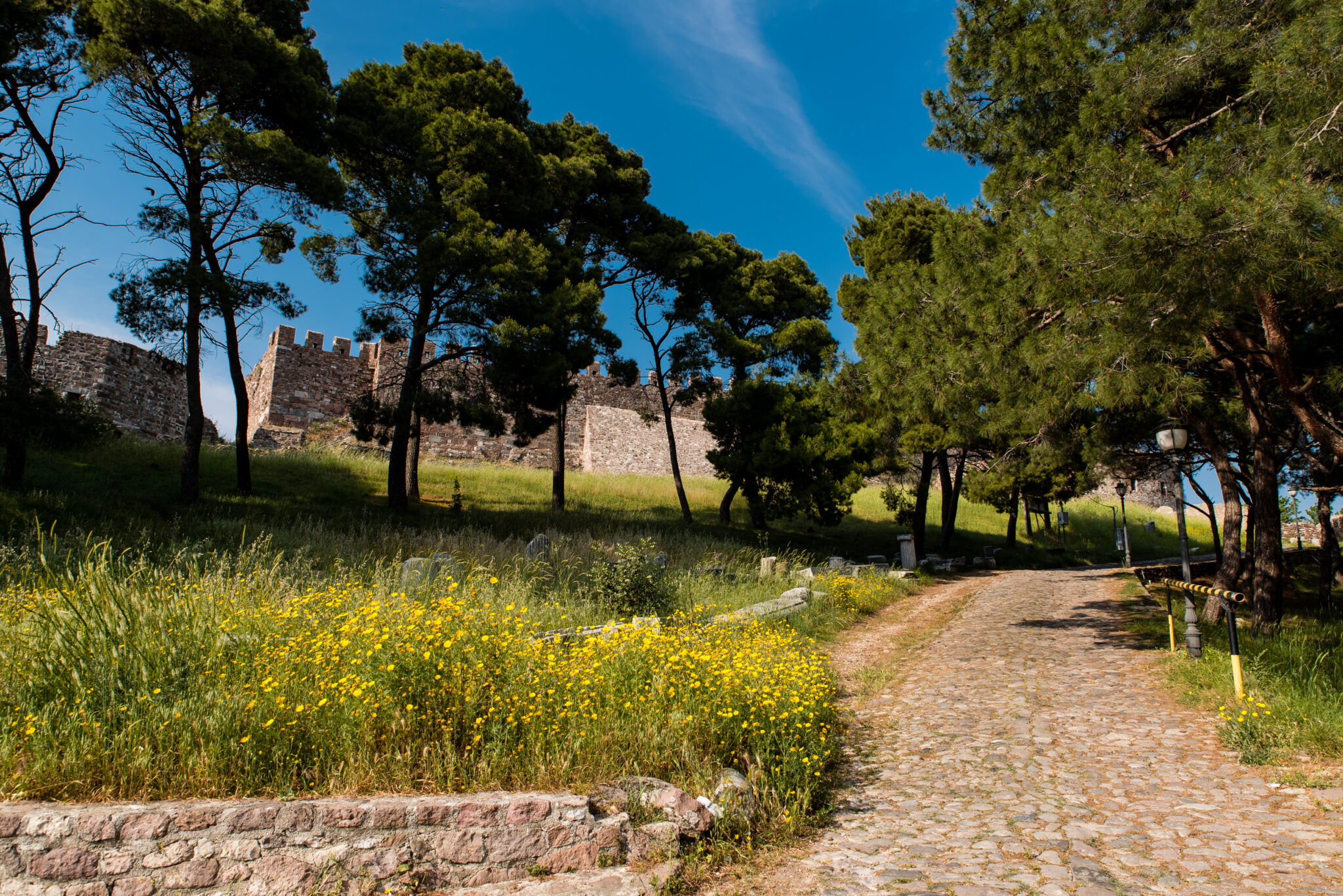Take a trip to Lesvos, a Greek island adorned with olive groves, thermal springs, and ouzo distilleries, and you can’t help but stumble upon Mytilene, its capital. Dominating the city’s skyline is an imposing fortress, the Mytilene Castle, a structure that has seen more drama than a daytime soap opera. Covering an astonishing 80,000 m2, it’s one of the largest castles in Greece and could easily be mistaken for a small hillside town if not for the cannons.
A Historical Merry-Go-Round
The castle’s fortifications first sprouted during the Byzantine years, right atop the erstwhile Acropolis. Like a picky architect, it went through three construction phases. The first was during the Byzantine period, pre-14th century, when it was essentially a large stone wall with ambitions. The second phase was courtesy of the Genoans in the 14th century, when the castle buffed up and became a major stronghold, and the third was an Ottoman makeover in the early 16th century.
During the Genoan era, the castle became a wedding gift, in the form of a fortified island, for Francisco Gatillusio in 1373, when he married the Byzantine emperor John V Palaiologos’s sister. A 1384 earthquake, evidently disapproving of the union, reduced a significant part of the castle to rubble and took out the entire royal family, save for one child, Giacomo. Rebuilding started in earnest only in the next century.
The Ottomans, never ones to miss out on a good castle, captured it after a brief yet violent siege in 1462. They added their own flourishes in the form of double curtain walls, bastions, a moat, and presumably some stylish Turkish rugs. They relinquished control in 1912 when Lesbos became part of the Greek state and presumably took their rugs with them.
A Fortress with Character and Sections
The castle is shaped a bit like an overfed dinosaur, with a maximum length of 300 meters on the NW – SE axis and the width ranging from 150 to 270 meters from NE to SW. Its outer perimeter stretches to 1400 meters, and most of its walls, like an old prizefighter, are still standing, albeit not always in good condition.
The castle, seemingly inspired by a medieval subdivision, is divided into three parts: the Upper, Middle, and Lower Castles, each with their distinct features. The Upper Castle, at the highest point, includes the “Megas Perivolos” (Grand Bailey) – the castle’s citadel and potentially a fourth section if it ever decides to secede.
The Middle Castle, the largest section, was formed by the Gattilusi family, possibly during a period of extreme boredom. The Lower Castle, near the sea and at the lowest point, was an Ottoman addition, presumably for those who preferred sea views.
Gates, Towers and the Other Add-Ons
In the Middle and Upper castle, there were two gates: the West Gate, a complex of gates that seems to have an identity crisis, and the Meridian Gate, a passage so layered you might mistake it for an onion. They both lead to elongated courtyards, older gates, and eventually into the castle. The Middle castle communicated with the Lower Castle through two small gates that could be mistaken for medieval cat flaps.
The Turks, during their tenure, made improvements and modifications in 1643/1644, adding external walls and bastions. They also introduced a moat, which, due to the rocky soil, was about as deep as a kiddie pool, but it still added an extra layer of protection. The Lower Castle was constructed around the same time, presumably because the Ottomans thought three’s a charm.
The Turks also made their mark on the Grand Bailey, where the lord most likely had his digs. Here, they constructed rooms with an external arched portico, and a gunpowder depot tucked safely underneath. The idea of living above a gunpowder depot might sound alarming to us, but hey, different strokes for different folks.
The Genoese left their mark, too. The polygonal leaning tower, which may have become redundant due to its precarious angle, was nevertheless incorporated into the Ottoman wall. It retained its original Genoese form, like a defiant time capsule amidst the changes. You could almost hear it whispering, “I was here first.”
An Unfortunate Demolition and a Controlled Access
A defining moment in the castle’s history occurred in 1960 when a double gate in the Lower Castle was demolished to make way for a coastal road. The concept of progress can sometimes be as subtle as a sledgehammer. Today, while you can waltz into the Lower Castle from various points, the Middle and Upper castles remain a bit snooty. Access to them is controlled and limited to the west gate, perhaps to preserve their dignity and historical significance.
So, there you have it, the Mytilene Castle – a structure that has seen empires come and go, survived earthquakes and sieges, and adapted to the whims and fancies of its rulers. It’s like the ultimate survivor of a historical reality show, standing tall and proud, a testament to the island’s rich and complex past. If these walls could talk, they’d certainly have some tales to tell. Perhaps they’d even write a bestselling memoir.
So, when you’re in Lesvos, don’t miss out on this behemoth of a castle. It’s like a history lesson etched in stone, a place where the past seems to come alive, and you realize that the human drama unfolding within its walls is as captivating as the sweeping views it offers from its ramparts. Just watch your step – those stones have seen centuries of wear and tear, and they’re not getting any younger.
Read also:
The Most Impressive Places to See in Lesvos



